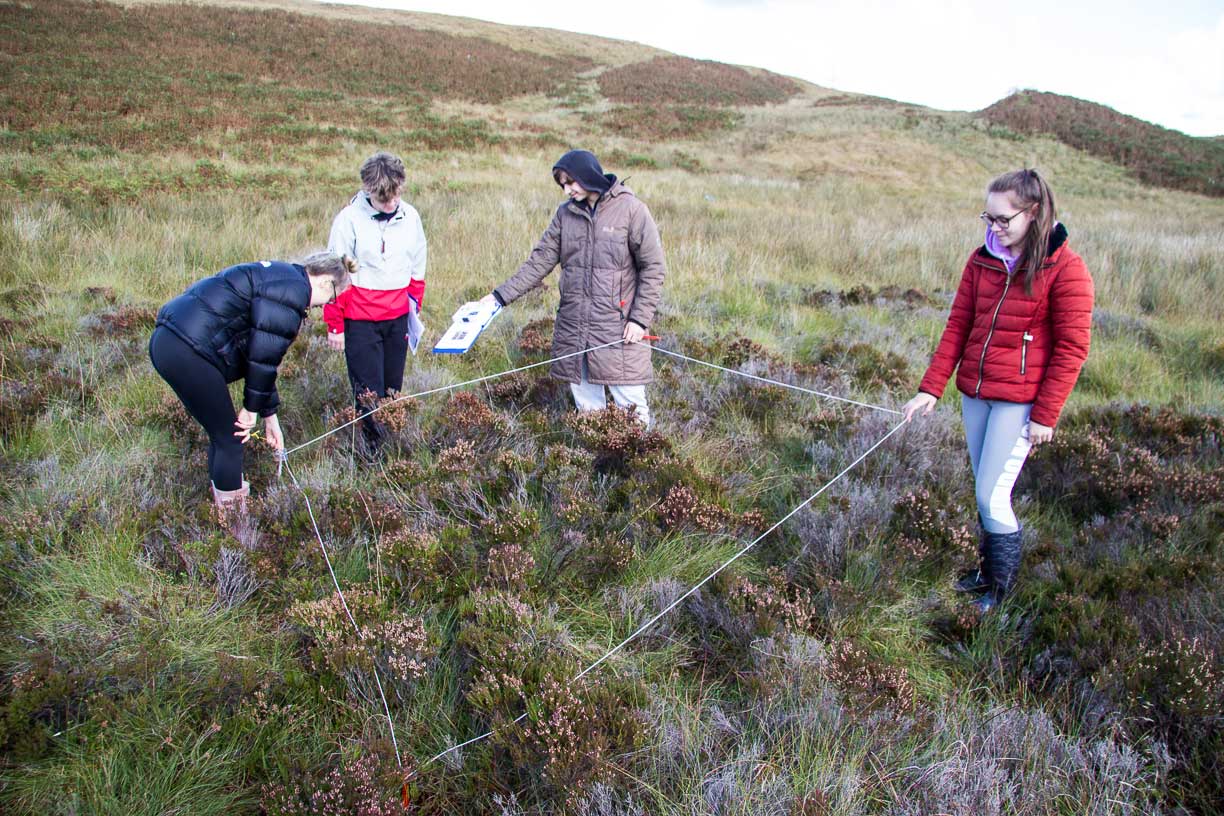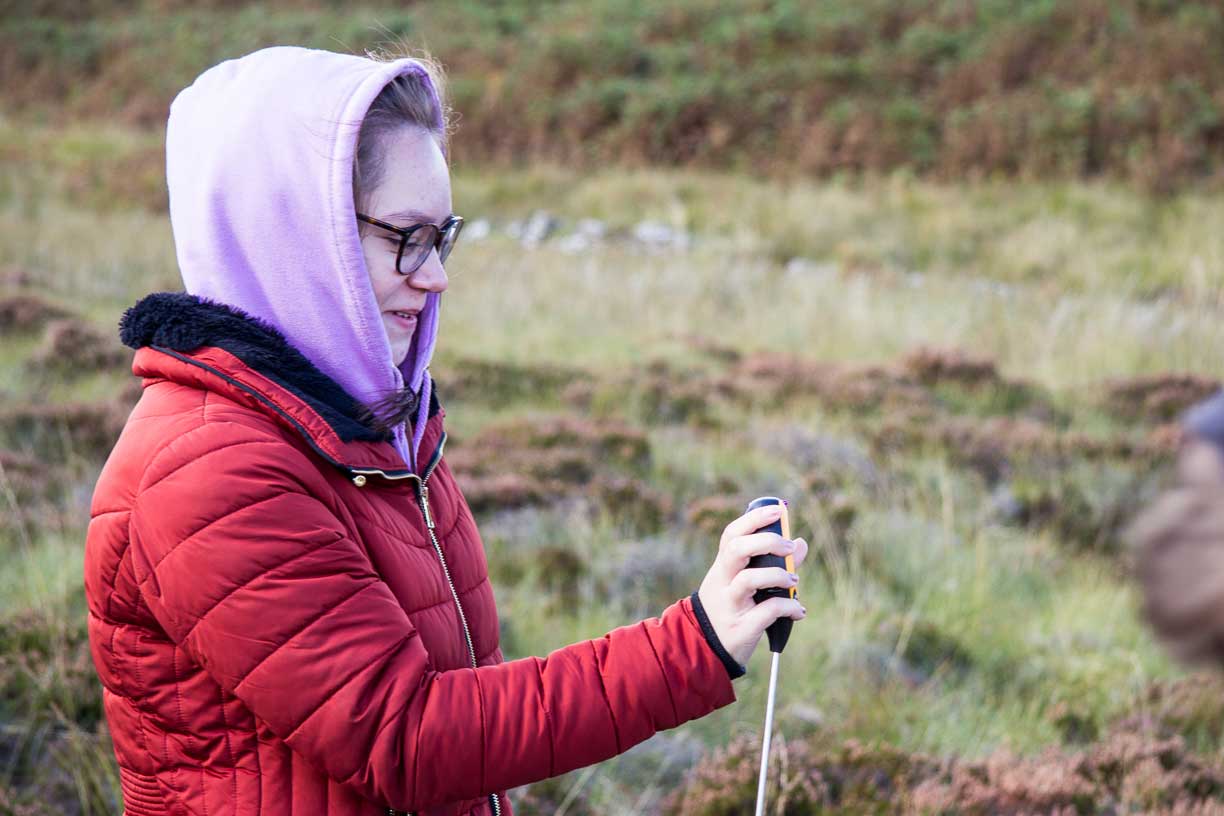
Putting COVID safe measures into action to restart our outdoor learning programme
This summer, the National Park Authority’s Education team were pleased to be able to deliver climate focused learning outdoors with Balfron High School. Education Advisor Ali Cush writes about how we worked to overcome obstacles and safely restart our outdoor learning programme.
Outdoor Learning is an important part of young people’s opportunity to develop a range of skills to support their journey through school. It has been promoted by the Scottish Government’s Education Recovery Group as a safe way to engage learners during the pandemic.
In 2019 the National Park Authority Education team supported Balfron High School’s Geography class to deliver the Moorland Indicators of Climate Change Initiative (MICCI) project. This is a UK-wide project with students from schools in or close to UK National Parks visiting moorland, or other peatland areas, to carry out activities in the field which have been carefully designed to help monitor the health of these sites.
In 2020 we have had to do things a bit differently as our normal Outdoor Learning programme has been paused due to Coronavirus. We have been working hard to review our internal processes to make sure we could not only restart our programme but also find new ways of engaging with young people safely and in accordance with Scottish Government guidelines. This included developing new online learning materials and resources for teachers.
For this particular project, Risk Assessments were re-written and new protocols were developed to ensure every safety measure could be put in place to protect everyone involved. Thankfully Mrs Youens, the S6 Geography teacher at Balfron High School, was really keen to involve her small Advanced Higher Geography class in the MICCI project, so we were able to put our new safety measures into practice and get back outside with pupils.
The project took place on a site called Moor Park near Drymen. This is on the Montrose Estate, where the landowner is working with our Conservation & Land Management team at the National Park to restore peatland to help mitigate the impacts of climate change. The team were integral to making sure the site was suitable and that the landowners were happy for us to bring the school back to the site this year.

Some of the extra safety precautions included:
- All students travelled to the site together and wore face coverings on the bus, with windows kept open for ventilation. Pupils spread themselves out in the bus and sat in the same seat each way.
- The two adults on board also wore face coverings.
- National Park Authority staff each drove separately to the site.
- The pre-prepared and cleaned equipment was separated and set out for the pupils’ arrival. The class had been split into two smaller groups to work through the experiments, each having their own identical set of kit.
- On arrival we delivered a longer Health & Safety briefing than in previous years.
- Social distancing was maintained (which was easy on a moor!).
- Each person took ownership of a piece of the monitoring equipment so that nothing was shared.
The students used GPS to find the survey location and once at the location, they measured the weather of the site to look at long-term change, including rainfall, temperature and wind speed. They then recorded the temperature and pH of the stream onsite as well as looking at the colour of the water to determine carbon load. Finally each group surveyed a 2m fixed quadrat recording soil temperature and pH; bare peat, vegetation cover and plant ID; all contributing to the MICCI project.
These experiments are repeated at the site each year, and contribute to the long-term monitoring of the health of the peat on the moor. Measuring the depth of the peat highlights how long-term we mean – we measured 6 metres of peat, which equates to over 6,000 years of peat development!
The weather was excellent, students learned a variety of different STEM (Science, Technology, Engineering and Maths) Skills and a contribution was made to real world climate science.

Finn (S6) said “It was great to get outside and learn for the day, and it was good to know we collected data that will be of real world use.”
Duncan (S6) said “It was good to be learning outside and carrying out the fieldwork ourselves rather than using data from other people.”
We would like to thank Balfron High, Ardroy Outdoor Education Centre who provided transport to the site, and Montrose Estates for supporting the project monitoring with the school. The effort to make it happen was more than surpassed by the learning and outcomes delivered, both for the pupils and the National Park Authority Education team.
Now that we have managed this very detailed field work session, we are more prepared and excited to restart our outdoor learning engagement programmes to support schools and more young people to visit, learn and, more importantly, enjoy their time in the National Park – needed now more than ever.
For further information on Loch Lomond & The Trossachs National Park Authority education materials and programmes, visit our outdoor learning hub.

